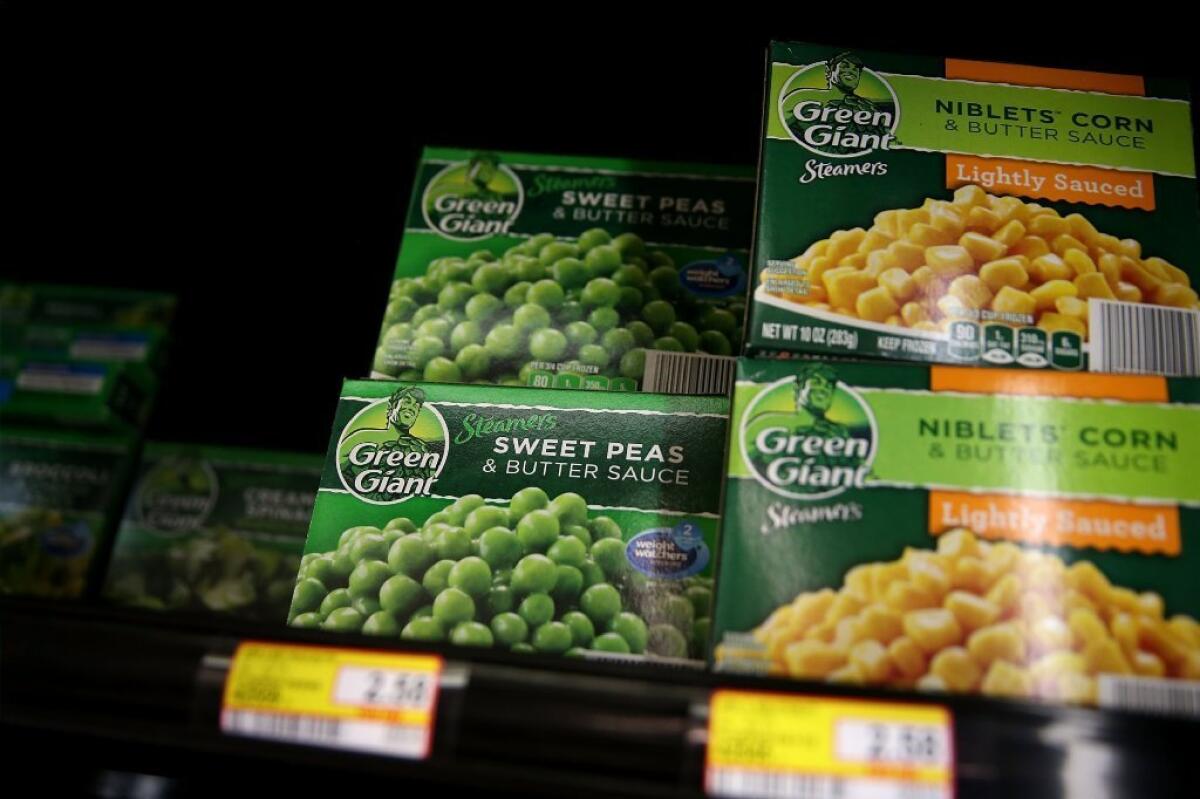When it comes to controlling weight, not all fruits and vegetables are created equal

A new study found that frequent consumption of starchy vegetables such as peas and corn didn’t prevent weight gain as well as eating certain other fruits and vegetables.
When admonished to eat more fruits and vegetables, we sometimes let our inner child dictate the menu. Wrinkling our noses at broccoli and Brussels sprouts, we demand peas and corn.
Our weary adult selves often relent. After all, they are vegetables, we tell ourselves.
Well, yes. But a new study finds that starchy veggies such as peas, corn and potatoes are vegetables that occupy a decidedly less elevated plane than many others. Higher consumption of a whole range of fruits and vegetables does help prevent weight gain over time, the new research finds. But satisfying our vegetable requirements with starchy vegetables, alas, will not keep the pounds from adding up.
One exception: soybeans and tofu. Though both contain some starch, people who boosted their intake of soy products during the study period reaped substantial protection against weight gain.
The new research draws from the responses of nearly 118,000 healthy Americans between 25 and 65 years old to questionnaires about what they ate and how much they weighed. The study, published Tuesday in the journal PLoS Medicine, covered 24 years of eating trends.
Many consumption surveys aggregate broad categories of foods to try to glean general patterns in Americans’ diets. Here, however, the researchers tapped into three large groups of study participants who were asked every two years to get very specific about how regularly they ate 131 different foods, including a wide range of fruits and vegetables.
In analyzing participants’ answers, the researchers aimed at detecting changes in fruit and vegetable intake, and in the composition of plant foods consumed. They sliced and diced their categories of fruits and vegetables, categorizing them according to their fiber content and the natural sugars they contained. They further divided fruits into citrus, melons and berries, and separated vegetables into classes including cruciferous, green leafy and legumes.
Overall, our mothers were right: Eating more fruits and veggies is good for us. In all three groups, participants who increased their consumption of total fruits and vegetables over the four years they were studied gained weight most modestly or not at all.
After accounting for age and gender and other factors that affect weight gain patterns, researchers found that those who increased their intake of blueberries, prunes, apples, pears, strawberries, grapes (or raisins) and grapefruit were least likely to gain much weight. People who ate more avocados (yes, a fruit) and melon on average gained less weight, but some individuals in these groups did buck the trend, gaining weight.
Those who boosted their consumption of peaches, plums and apricots were the only class of fruit-eaters to gain modestly.
The breakdown of vegetables gave very high marks to consumers who increased their intake of tofu and soy. But eating more cauliflower, summer squash, string beans, peppers, broccoli, Brussels sprouts and green leafy vegetables also conferred great protection from weight gain.
The trend was reversed when respondents reported an uptick in consumption of baked, boiled or mashed potatoes, corn or peas. Among those study participants -- and to a lesser extent among those who ate more cabbage, onions and winter squash -- weight gain was more common.
Some of the magic conferred by these fruits and vegetables may lie in their polyphenol content, the plant-based phytochemicals that reduce the damage caused by oxidation in our cells. But some of their benefits, the researchers say, may be far simpler: When we increase our consumption of these foods, they usually crowd out foods that are denser in fat and calories, such as meats and gooey desserts.
Follow me on Twitter @LATMelissaHealy and “like” Los Angeles Times Science & Health on Facebook.
ALSO
Dinosaur discovery in Alaska: A duck-billed herbivore that didn’t fear the snow
Sex after heart attack: Enjoy without anxiety (but don’t count it as exercise)
How much do American kids love apples? They account for 29% of fruit consumed each day




